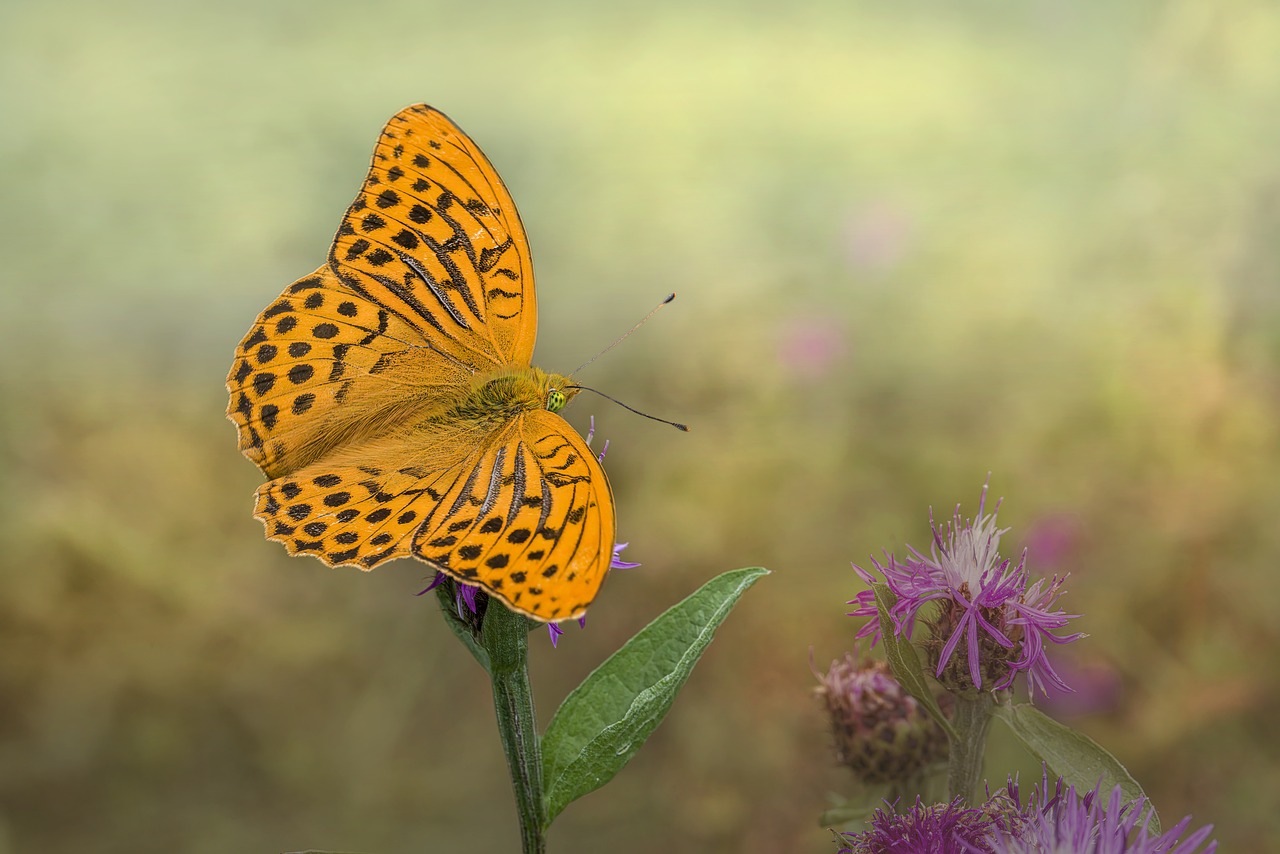The Silver-washed Fritillary (Argynnis paphia) is a striking butterfly species belonging to the family Nymphalidae. Here are some key features and characteristics of the Silver-washed Fritillary:
- Appearance: The Silver-washed Fritillary is a large and colorful butterfly with wingspan typically ranging from 55 to 70 millimeters (2.2 to 2.8 inches). The upper side of the wings is predominantly orange with black markings and silver streaks or spots, giving it a shimmering appearance. The underside of the wings is lighter in color with intricate patterns.
- Distribution: The Silver-washed Fritillary is found across Europe and parts of Asia, inhabiting various habitats such as woodlands, forest edges, meadows, and gardens. It is particularly abundant in deciduous woodlands where its larval host plants grow.
- Lifecycle: Like other butterflies, the Silver-washed Fritillary undergoes complete metamorphosis, progressing through egg, larva (caterpillar), pupa (chrysalis), and adult stages. The caterpillars are black with rows of spiky yellow or white spots and feed on the leaves of violets (Viola species), which serve as their primary host plants.
- Behavior: Silver-washed Fritillaries are diurnal and are typically seen flying gracefully in sunny areas, particularly in woodlands where they feed on nectar from flowers such as thistles, brambles, and knapweeds. They are strong fliers and may travel considerable distances in search of food and suitable breeding sites.
- Mating and Reproduction: During the breeding season, males actively patrol their territories, seeking out females for mating. After mating, females lay their eggs on the leaves of host plants, typically near the base of the plant. The eggs hatch into caterpillars, which undergo several instars before pupating and emerging as adult butterflies.
- Conservation: While the Silver-washed Fritillary is not considered globally threatened, habitat loss and fragmentation due to deforestation, agricultural intensification, and urbanization can impact its populations. Conservation efforts focus on preserving and restoring suitable habitats, promoting sustainable land management practices, and raising awareness about the importance of butterflies and their ecosystems.
Overall, the Silver-washed Fritillary is a beautiful and ecologically important butterfly species, contributing to pollination and serving as a delightful sight for nature enthusiasts in woodlands and other habitats across its range.
Views: 47
Subscribe to the newsletter:
